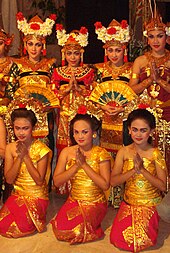Being in the Bunaken Marine Park Bunaken Subdistrict Kel. Bunaken about 7 miles from the Port of Manado which can be taken for 35 minutes from downtown by boat motors. At first Bunaken is a coral island (atoll). It covers an area of about 887.5 hectares with a slightly wavy morphology conditions. Bunaken National Marine Park is one of the most beautiful in the world.
Most of the coastline consists of mangrove forests and white sand. There is a sea of hard and soft coral reefs, coral walls are steep, with various shapes and colors of marine life including fish are sharks, turtles, Mandarin Fish, sea horses, stingrays, and the famous King of the Sea is an ancient fish (Coleacant) and there are many more that make up the beautiful marine park. Beautiful sea garden can be seen in locations called Lekuan 1, 2, and 3, Fukui, Mandolin, Tanjung Paragi, Ron’s Point, Sachiko Point, Pangalisang, Home Village, and East Bunaken. Where tourism and marine tourism Sea tourism visits to the object, the sea and the beach. Tourism activities to do, a way to enjoy the marine park sigtseeing (round) glass boat (catamaran), snorkeling (swim wear breathing apparatus) diving and underwater photography; and sunbathing bodies and beach outings. The facilities provided in the Bunaken marine park, which filled the boat, diving center, cottage (specialty) restaurant, pavilion, and souvenir stalls. Tourism Indonesia Heaven on Earth.
Bunaken National Park is representative of Indonesia’s tropical aquatic ecosystem consisting of mangrove ecosystems, seagrass beds, coral reefs, and land / coastal ecosystems. In the northern part of the island of Bunaken, Manado Tua island, the island Montehage, Siladen island, the island of Nain, Nain Small islands and some coastal areas of Cape Pisok. While in the Southern Cape coast includes some coconut. Potential land islands national park is rich in species of palm, sago, woka, silar and coconut. Animal species that live on the mainland and coastal regions such as Sulawesi black macaques (Macaca nigra nigra), deer (Cervus russa timorensis), and possum (Ailurops ursinus ursinus). plant species in the mangrove Rhizophora Bunaken National Park is sp., Sonneratia sp., Lumnitzera sp., and Bruguiera sp. This forest is rich with various kinds of crabs, shrimp, mollusks and various types of sea birds such as gulls, herons, tern, and cangak sea. Types of algae found in this park include the type of Caulerpa sp., Halimeda sp., And Padina sp. Seagrass Montehage dominated mainly on the island, and islands are Thalassia hemprichii Nain, Enhallus acoroides, and Thalassodendron ciliatum.
Recorded 13 general living coral in the waters of Bunaken National Park, dominated by fringing reefs and barrier reefs. The most interesting is a vertical cliff as far as 25-50 meters. Approximately 91 species of fish found in waters of Bunaken National Park, including fish gusumi horse (Hippocampus horse), white oci (Seriola rivoliana), lolosi yellow tail (Lutjanus kasmira), goropa (Ephinephelus spilotoceps Pseudanthias hypselosoma), ila trunk (Scolopsis bilineatus) , and others. Types of mollusks like giant clams (Tridacna gigas), head of the goat (Cassis cornuta), hollow nautilus (Nautilus pompillius), and tunikates / ascidian.
The best visiting season: May / August each year. How to reach the location: Bunaken National Park can be reached through the port of Manado, Marina Nusantara Diving Centre (NDC) in the District of Molas and Marina Blue Banter. From Manado harbor by boat motors toward the island can be reached Siladen + 20 minutes + 30 minutes Bunaken island, the island Montehage + 50 minutes and +60 minutes Nain island. From Blue Banter Marina with yachts that are available to the tourist area on Bunaken island can be reached within 10-15 minutes, while the NDC harbor to the dive sites in Bunaken island by speed boat to within + 20 minutes.
Most of the coastline consists of mangrove forests and white sand. There is a sea of hard and soft coral reefs, coral walls are steep, with various shapes and colors of marine life including fish are sharks, turtles, Mandarin Fish, sea horses, stingrays, and the famous King of the Sea is an ancient fish (Coleacant) and there are many more that make up the beautiful marine park. Beautiful sea garden can be seen in locations called Lekuan 1, 2, and 3, Fukui, Mandolin, Tanjung Paragi, Ron’s Point, Sachiko Point, Pangalisang, Home Village, and East Bunaken. Where tourism and marine tourism Sea tourism visits to the object, the sea and the beach. Tourism activities to do, a way to enjoy the marine park sigtseeing (round) glass boat (catamaran), snorkeling (swim wear breathing apparatus) diving and underwater photography; and sunbathing bodies and beach outings. The facilities provided in the Bunaken marine park, which filled the boat, diving center, cottage (specialty) restaurant, pavilion, and souvenir stalls. Tourism Indonesia Heaven on Earth.
Bunaken National Park is representative of Indonesia’s tropical aquatic ecosystem consisting of mangrove ecosystems, seagrass beds, coral reefs, and land / coastal ecosystems. In the northern part of the island of Bunaken, Manado Tua island, the island Montehage, Siladen island, the island of Nain, Nain Small islands and some coastal areas of Cape Pisok. While in the Southern Cape coast includes some coconut. Potential land islands national park is rich in species of palm, sago, woka, silar and coconut. Animal species that live on the mainland and coastal regions such as Sulawesi black macaques (Macaca nigra nigra), deer (Cervus russa timorensis), and possum (Ailurops ursinus ursinus). plant species in the mangrove Rhizophora Bunaken National Park is sp., Sonneratia sp., Lumnitzera sp., and Bruguiera sp. This forest is rich with various kinds of crabs, shrimp, mollusks and various types of sea birds such as gulls, herons, tern, and cangak sea. Types of algae found in this park include the type of Caulerpa sp., Halimeda sp., And Padina sp. Seagrass Montehage dominated mainly on the island, and islands are Thalassia hemprichii Nain, Enhallus acoroides, and Thalassodendron ciliatum.
Recorded 13 general living coral in the waters of Bunaken National Park, dominated by fringing reefs and barrier reefs. The most interesting is a vertical cliff as far as 25-50 meters. Approximately 91 species of fish found in waters of Bunaken National Park, including fish gusumi horse (Hippocampus horse), white oci (Seriola rivoliana), lolosi yellow tail (Lutjanus kasmira), goropa (Ephinephelus spilotoceps Pseudanthias hypselosoma), ila trunk (Scolopsis bilineatus) , and others. Types of mollusks like giant clams (Tridacna gigas), head of the goat (Cassis cornuta), hollow nautilus (Nautilus pompillius), and tunikates / ascidian.
The best visiting season: May / August each year. How to reach the location: Bunaken National Park can be reached through the port of Manado, Marina Nusantara Diving Centre (NDC) in the District of Molas and Marina Blue Banter. From Manado harbor by boat motors toward the island can be reached Siladen + 20 minutes + 30 minutes Bunaken island, the island Montehage + 50 minutes and +60 minutes Nain island. From Blue Banter Marina with yachts that are available to the tourist area on Bunaken island can be reached within 10-15 minutes, while the NDC harbor to the dive sites in Bunaken island by speed boat to within + 20 minutes.









































